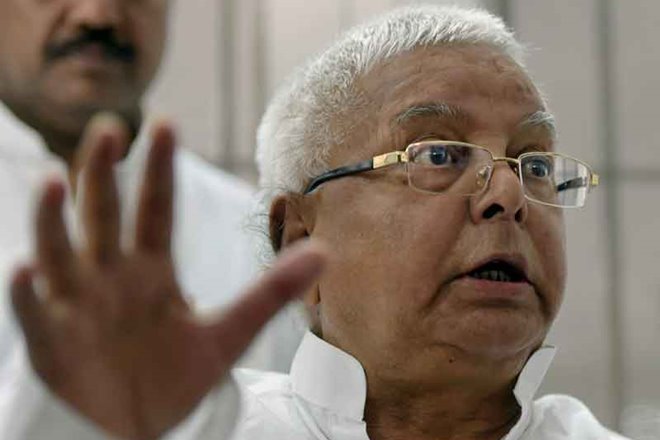I remember Lalu Yadav at the peak of his political career. Those were the days when coalition dominated Indian politics and politicians like him were the kingmakers. In 2004, when his wife was the CM of Bihar, Lalu became the railway minister in the erstwhile UPA administration. He seemed politically invincible when finally; he met his waterloo in his own backyard in 2005.
Lalu Prasad Yadav seemed like a born politician. He entered politics in 1970 and became the head of Patna university students union within three years. Influenced by JP Narayan and Bihar movement, Lalu plunged into the Janata party politics. He was even one of the youngest members to be inducted as the member of the parliament at the age of 29. There was no stopping and thereafter as a reversal of fortunes over factional war in Janata party,
Lalu could carve his way on to the podium. He became the CM of Bihar and initially even the World Bank had praised his work on the economic front.
Nevertheless, his style of governance was shrouded with all the elements of hooliganism thriving on lawlessness and private groups of armies. Famously touted as ‘Jungle Raj, Bihar saw a rapid decline in every parameter. Kidnappings became rampant, investments dried up and corruption became the centrepiece of Lalu’s regime. As RJD centralized its power, men like Pappu Yadav and don Shahabuddin became his unceremonious coterie. Lalu was accused of a 900 multi crore fodder scam which forced him to step down as the CM. Fallout of it resulted into the formation of his own political outfit in the form of RJD. However, he installed his wife as the CM and smartly was running the show behind the throne. This surrogate arrangement continued for a term and it was ousted in 2005.
Lalu’s moment of glory was his stint as the railway minister. He was lauded for turning over railways from a loss-making entity into a profitable enterprise. This had led to several invitations by top notch business schools and he seemingly became a poster boy for a revamped railway. Later, his work was doubted and even considered cosmetic. According to CAG, it was the new practice of issuing a “statement of cash and investible surplus” that helped Lalu project a wrong yet rosy picture. Some even said his tenure was nothing more than presenting financial figures differently.
In 2009, RJD managed only 4 seats and even after giving support to the UPA, it did not receive any ministry. 2005 in Bihar and 2009 at the centre had reduced Lalu’s clout and hold over his state. After nearly fifteen years of Jungle raj, Nitish Kumar and the BJP mounted a challenge and could break his caste combination. Lower caste like Yadavs and minorities together was the equation that fed power to Lalu’s RJD lantern. As Nitish Kumar became the CM with the help of BJP, the powerful might of Lalu Yadav reached its impending doldrums. The state slowly started to show signs of emerging from a lawless past into a hopeful bright future.
The next assembly elections in Bihar saw Nitish Kumar and BJP romping home with two thirds and RJD was reduced to a paltry 22. That was the time when it was certain that RJD is never going to come back again as a formidable force in Bihar polity. Meanwhile, Lalu was convicted in the multicrore fodder scam in 2013 which sent shockwaves across corridors of power in Bihar. Even if he was released on bail, it seemed that the decimation of RJD had secured its embarrassing symbol.
2015 paved the way for an unexpected turn around of sorts. BJP after winning power in Lok Sabha was looking resurgent to sweep the state. Its divorce with Nitish Kumar on the eve of 2014 general elections was met with rich dividends. However, as it tried to translate its foot prints here in Patna, it was jolted by a rude shock. JD (U) and RJD along with the Congress party made a rainbow coalition which consolidated Muslim Yadav combination and steered them home. RJD with its highest MLAs was springing back to life and energy once again. After facing a lull and possibility of an extinction, Lalu had pulled RJD from death bed to make it again a force to reckon with.
Nevertheless, the quest for power has resulted in a tug of war with Nitish Kumar. Lalu is keen to put his son as the CM and his working style is not compatible with Nitish Kumar’s way of functioning. This had even raised speculations of a break up as Kumar has shown coziness and subtle outreach towards the BJP.
But three reasons have again cast a shadow on RJD and especially Lalu’s sway over politics in Bihar.
Firstly, Arnab Goswami and his expose of Lalu communicating with Mafia from prison have raised the stakes of a break up with Kumar. A Nitish Kumar and BJP rerun of bonhomie will spell doom to the winning caste formulae and further reduce RJD and Lalu’s political might.
Secondly there are other scams like ‘Mitti’ where Lalu’s son is said to be involved along with other property related financial misappropriation. (His daughter allegedly laundered money to buy farmhouse in Delhi) This has further dented Lalu’s image.
Thirdly, the ghosts of the fodder scam are back to haunt him as the Supreme Court has directed a fresh trial in the case which significantly will affect Lalu’s attempts to cling to power in the state.
Lalu Yadav was running his party like a family fiefdom and its implications are very evident. He has seen several ups and downs but this time the ‘Republic’ punch coupled with Supreme Court ruling may be too much to take. Lalu made people laugh with his unique way of being a court jester or a stand-up comedian with his antics.
However, his political career is on the verge of getting into oblivion again. And Karma may be having the last laugh.
